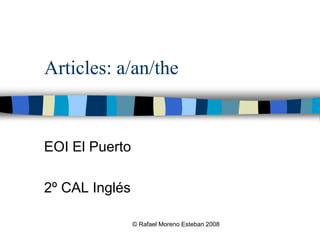This document discusses the use of articles (a, an, the) in English. It explains that articles are adjectives that modify nouns. The definite article "the" refers to specific nouns, while the indefinite article "a/an" refers to non-specific nouns. It provides examples of when to use definite vs. indefinite articles and discusses rules for using "a" vs. "an" based on sound. The document also covers uses of the definite article and omitting articles with certain nouns.











